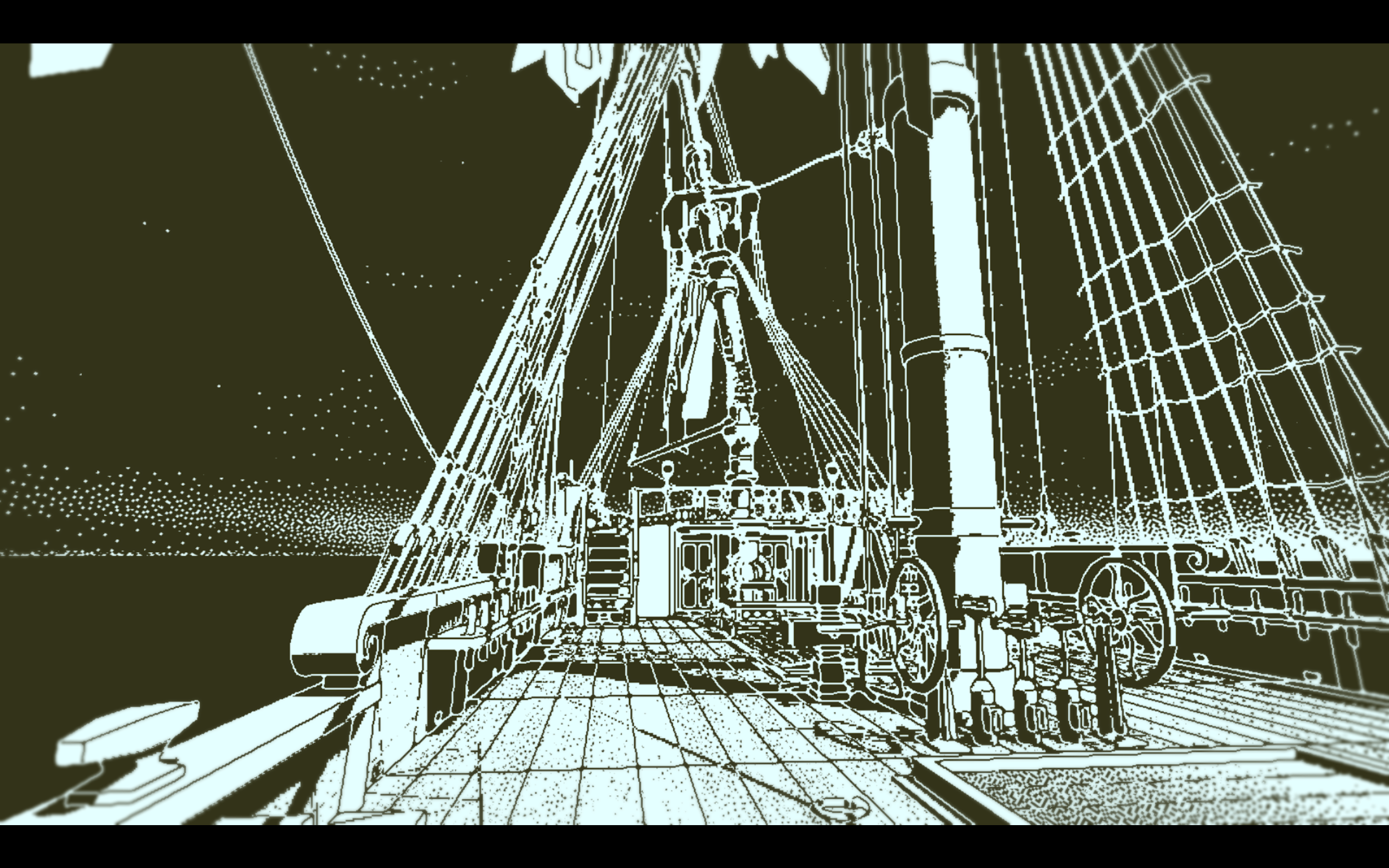Return of the Obra Dinn is the epitome of an embedded narrative because it fully exploits the gap between the players’ knowledge of the plot and the story itself.
You play as an insurance adjustor investigating a lost ship so that an insurance claim can be filed. You, like your character, have no idea what happened. Moreover, and unlike most mysteries, you have no context either. Your typical mystery starts from the outside in. You understand roughly how and when the person died, and which few people had the incentive to kill them. But there’s a big missing piece in the center—what actually happened the night of the murder.
Obra Dinn’s core mechanic turns this on its head. You possess a magical artifact, the Momento Mortum, which allows you to observe the exact scene at the moment of any corpse’s death. What happened the night of the death is clear as day to you—but all the context is missing. All you have are tiny snippets of dialogue and still frames to explore. You don’t know who any of the people are, how they got in this position, or why they’re doing what they’re doing.
This is enormously powerful for increasing the satisfaction from uncovering an embedded narrative. Whereas mysteries typically all build up to a big reveal, forcing the media to deprive you of clear answers until the very end, here relationships and context can be progressively locked in and found out without spoiling the overall story. The game formalizes this process into a mechanic by giving you a book, which will ultimately be your report on the tragedy, that you fill in over time, listing who different figures are and how they died as you uncover that information. It begins nearly blank, perfectly representing just how wide of a gap Obra Dinn creates between plot and story.

Obra Dinn is further exceptional in a second way: how it uses space. The ship is a small area, and its closed doors and narrow corridors substantially constrain the players’ movement, and therefore their ability to investigate. Sightlines are carefully controlled and key elements are placed right in the players’ view, where they are likely to encounter them first. Look around a bit, though, and you’ll find layered mysteries. At one point in a death scene I was viewing, I turned around to leave a room where I’d discovered a man being treated for a fatal wound only to find someone bludgeoning two others to death just outside, cleverly placed so I wouldn’t notice them until I turned around to leave. Further, the game slowly unlocks doors as you discover more, ensuring you’re not overwhelmed with options and clues from the start, but can rather build your understanding of the mystery one bit at a time.
As good as the game is with space, Obra Dinn doesn’t limit itself to a measly three dimensions. Thanks to the Momento Mortum, the player’s exploration is extended to a fourth dimension: Time.
This forms the game’s core loop. Rather than experiencing the aftermath of the mystery in the present, each time you discover a dead body in a death scene, you can use that anchor to jump back even further.
This controls the story in an incredibly elegant way. The game can control what you see by placing corpses strategically in certain moments of death, forcing you to experience the plot backward as a series of fragmented freeze frames.
Getting to see the story, even through this intentionally limited window, is incredibly rewarding—my favorite moment so far has been panning up as I entered a scene to see a giant kraken in the process of attacking a ship. The moment, held in stark relief by it being frozen in time, left me awestruck.

While I’ll have to leave full judgment of the game once I’ve completed it fully, I’m immediately impressed by what The Return of the Obra Dinn has brought to the table. By robbing the situation of any context and having the player solve the mystery by uncovering that context, the game creates an incredibly satisfying experience. Meanwhile, by presenting the story as a series of scenes frozen in time and only accessible via the corpses of the dead, the narrative architecture allows the player to experience the events of the mystery firsthand. It’s reminiscent of the slow, backward piecing-together of the movie Momento, and an experience I’d highly recommend.



